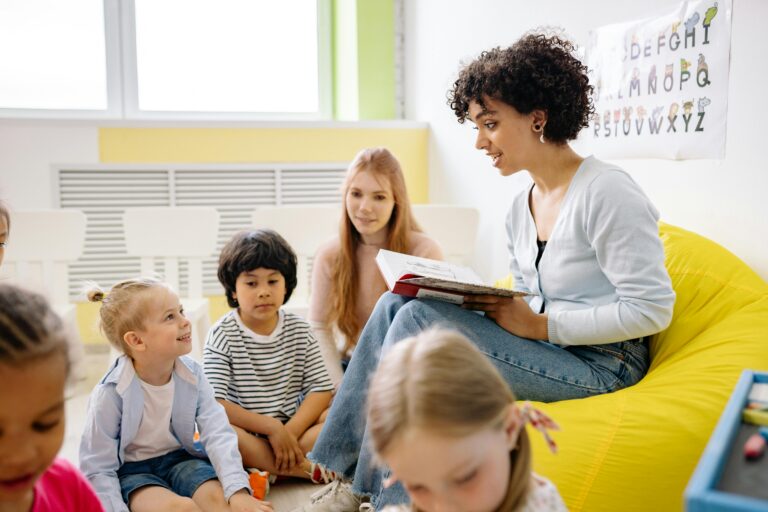Student engagement is a primary focus of my work. When entering classrooms, I often observe teachers giving directions and delivering instruction while students have their heads down, writing, drawing, or basically looking anywhere but at the teacher. When addressed, the response I often hear is, “Well, some students can look distracted and still be listening.” While this may be true for some students in some cases, much is missed.
Setting a foundational classroom expectation for 100% eye engagement is purposeful and impactful in numerous essential ways, laying the groundwork for deeper connections and trust. Let’s begin with a few fundamental reasons along with the messages they convey.
Engagement and Value: Asking for student eyes and ears reinforces the significance of active participation and communicates that students’ comprehension is valued.
- Message: “This matters, and you matter.”
Understanding and Recognition: Emphasizes the importance of individual attention, looking out for each student, and the desire to notice whether they are with you or not in the moment is crucial for providing equitable support.
- Message: “I notice you and am here to support you.”
Follow-Through Commitment: Requesting all eyes and full engagement necessitates consistent follow-through to ensure 100% participation. Failure to follow through creates confusion, erodes trust, introduces unpredictability, and may be perceived as unfair and inconsistent.
- Message: “I deeply care about your learning; that’s why I’m committed to following through and holding you accountable to this expectation.”
Eye Contact Norm: In an era where face-to-face communication is diminishing due to electronic interactions, recognizing its decline makes it crucial to emphasize the importance of teaching and consistently reinforcing eye contact as a valuable societal norm.
- Message: “I’m with you, open to, and respect your voice.”
While these are all very important, there is something happening on a deeper level. Eye contact plays a crucial role in social bonding. When requesting eye contact, it is vital to go beyond a mere request for a student’s gaze. You have a role and responsibility to reciprocate the gaze, truly seeing and connecting with your students as individuals. “Eyes are the windows to your soul,” and at the core of this, there must be a belief that “When you look into their eyes, you must see brilliance, a reflection of yourself, and a student who is destined for greatness as a direct result of the unwavering belief you have in him/her” (Kafele, 2013, p. 34). In this moment with “all eyes on the speaker” the teacher has the opportunity to convey the message that they are not simply addressing the classroom as a whole but each individual in the classroom, sending the message of “I see you, you matter, you are capable, you are important, and you are cared for in this classroom community.”
So, what is happening on a broader social, relational, emotional, and even physiological level during eye contact?
Trust and Cooperation: Research suggests that eye contact can contribute to the development of trust and cooperation in social interactions. It creates a sense of openness and sincerity.
Social Bonding and Relationships: In many cases eye contact is critical for improving relationships. Neuroscientists have shown that eye contact produces oxytocin, dopamine and other positive-feeling brain chemicals. Oxytocin, often referred to as the “love hormone” or “bonding hormone”, is associated with social connection, trust, and emotional bonding. It helps us relate to and develop a closeness with others.
Ultimately, all learning relies on relationships, and eye contact is one way we form and reinforce those bonds.
COACH’S CORNER: Elevate your coaching impact! Share this article to ignite engaging discussions and leverage the following prompts to guide and deepen conversations, surfacing profound insights on this topic.
Relationships: How does maintaining eye contact contribute to building trust and understanding between you and your students?
Sense of Belonging: In what ways does intentional eye contact create a sense of belonging, making each student feel acknowledged and valued in our learning community?
Conveying Importance: How does eye contact convey the importance of your message, influencing students’ perception of its significance in learning?
Direct Communication: What message do students receive when you speak to them eye to eye while giving directions and delivering instructions?
NOTE: Children identified with special needs may initially find eye contact challenging, but don’t assume they cannot comfortably and effectively adapt. For many children with autism, improving eye contact has been linked to increased attentiveness, enhanced social inclusion, and better preparation for success in social and professional contexts where eye contact is customary. Collaboration with members of the behavior or autism support team is highly important to develop personalized strategies and accommodations, as each student’s needs may be unique. Additionally, it is crucial to be aware of, respect, and acknowledge cultural differences where direct eye contact may be viewed as disrespectful or confrontational. Teaching these students the significance of adapting their behavior in different contexts will help them better navigate diverse social situations, understanding and incorporating the norms of the new culture for a well-rounded social competence.
By: Richard Frank, Ed.D. CT3’s Program Lead
Citation:
Kafele, B. (2013). Closing the attitude gap: How to fire up your students to strive for success. Association for Supervision & Curriculum Development
Check out CT3 Education programs such as No-Nonsense Nurturer, Real Time Teacher Coaching, and Real Time Leadership Coaching to find out more about Professional Development for Teachers and Leaders, classroom management strategies, and building relationships with students and their families.
Category: Education, Relationship Building, Teaching, Tips for Teachers



